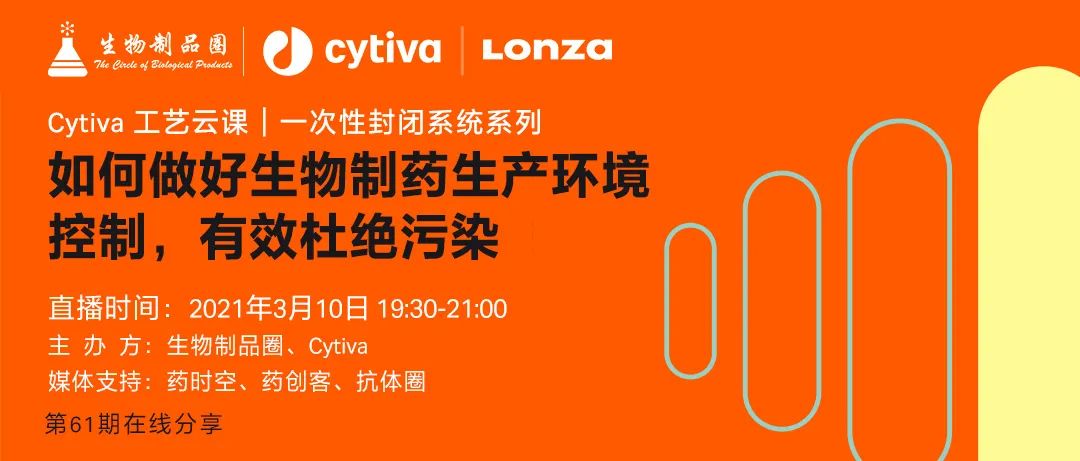a.Attenuated and inactivated virus vaccines;
b.mRNA vaccines;
c.Viral vector vaccines;
d.Subunit protein vaccines; and
e.DNA plasmid vaccines.
Conventional methods of making vaccines using live-attenuated virus (weakened) or whole-inactivated (killed) virus are tried and true, but they take longer times to develop. They stimulate our B cells to make antibodies. Sinovac and Sinopharm in China developed inactivated virus vaccines for COVID-19. Like DNA vaccines, inactivated vaccines often need two immunizations, so do both mRNA vaccines by Pfizer and Moderna. In contrast, some viral vector vaccines can induce robust and durable neutralizing antibody responses after a single immunization.[4]
The four frontrunners for making viral vector vaccines are China’s CanSino Biologics (CanSinoBIO), Oxford University/AstraZeneca, Russia’s Gamaleya Institute, and Johnson & Johnson.
What is a vector?
Also known as a recipient or a vehicle, a vector is a more innocuous bacterium or a virus (e.g., adenovirus) into which the genetic sequence of the antigen (e.g., spike protein of SARS-CoV-2) is inserted.
What is a viral vector vaccine?
Also known as a vectored vaccine, it is a vaccine that uses a vector to deliver genes encoding the antigen as the genetic payload into host-cell nuclei and elicit an immune response.
Viral vector vaccines are considered subunit vaccines because they only make antigens, not the whole virus. They use another more innocuous virus such adenovirus, poxvirus, lentivirus, vesicular stomatitis virus, herpes virus, and measles virus to carry the genetic instructions to make spike protein. Current coronavirus vaccines all use adenoviruses for very good reasons. Known to cause mild cold or flu-like symptoms, adenoviruses were first isolated in the 1950s from adenoids that had been surgically removed. As non-enveloped icosahedral double-stranded DNA (dsDNA) viruses, adenoviruses are considered large viruses and amenable to easy manipulation and very good at getting into cells. Adenoviruses have transitioned from initially tools for gene replacement therapy in the past to bona fide vaccine delivery vehicles nowadays. They are attractive vaccine vectors due to their high insert capacity and proven immunogenicity to induce both innate and adaptive immune responses in mammalian hosts.
To construct a viral vector vaccine for COVID, the genes encoding the prefusion-stabilized spike protein from SARS-CoV-2 are identified from the virus genome and prepared. Meanwhile, an adenovirus vector is chosen and genetically engineered so it cannot replicate. The modified adenovirus as the carrier virus is fused with the spike protein DNA as the genetic cargo to make the vaccine. This is why a viral vector vaccine is also known as a recombinant vector vaccine. When the patient is given the vaccine, the recombinant adenovirus vector infects the host cell and pushes the spike DNA into the cell nucleus. Subsequently the gene for the coronavirus spike protein are read by the cell and copied into a messenger RNA (mRNA). mRNA then tells the cells to make the natural SARS-CoV-2 spike protein using host cell’s own biochemical machinery. Some of the spike proteins produced by the vaccinated cell form spikes that migrate to its surface and stick out their tips, giving rise to an antigen-presenting cell. Adenovirus vector vaccines are the best of all vaccines at inducing a helper T-cell response.
CanSinoBIO uses replication-defective adenovirus serotype 5 (Ad5) as the viral vector to make their COVID vaccine Ad5-nCoV. Ad5, which ubiquitously infects humans and causes the common cold, was one the first adenoviral vectors being used in the 1980s. Researchers stripped Ad5 of the early E1 gene rendering it replication-incompetent and inserted those genes into genetically engineered cell lines.
Founded by former Sanofi vaccine developers, CanSinoBIO developed an Ad5-based vaccine for Ebola during the 2014 outbreak, which approved in 2017 in China for military use. Taking advantage of their expertise with the Ad5 vector, CanSinoBIO quickly developed the COVID-19 vaccine using Ad5 as the viral vector. In March 2020, CanSinoBIO became the first company in the whole world to begin a clinical trial of a COVID-19 vaccine. Ad5-nCoV has been approved for immunization in several countries now.
The major downside to the human adenovirus vectors such as Ad5 is pre-existing immunity against the vector itself, which could destroy the vehicle and blunt the vaccine’s effectiveness. Ad5 circulates widely, causing common cold and some people, especially the elderly, harbor antibodies that will target the vaccine, making it ineffective. In the US, about 40% of Americans are seropositive for Ad5. To overcome such a shortcoming, Oxford/AstraZeneca picked chimpanzee adenovirus and Johnson & Johnson chose to use adenovirus serotype 26 (Ad26) with lower prevalence in humans.
Russia’s Sputnik V vaccine (rAD26-S/rAd5-S) starts with a shot of Ad26 vector followed by a booster with Ad5 vector, both of which carry the gene for the spike protein of SARS-CoV-2. The Sputnik-V is reported to be 92% effective. Putin’s daughter had a fever after taking the vaccine, probably because vector-based vaccines stimulate a strong immune response, especially for the booster shot.
As alluded earlier, the Oxford-AstraZeneca vaccine (ChAdOx1 nCoV-19) uses a chimpanzee adenovirus as a vector that closely resembled human Ad5. Chimpanzee adenoviruses have sero-prevalence of below 10% in most human populations with slightly increased rates in Sub-Sahara Africa. Back in 2012, the Oxford group developed its own chimpanzee-derived vector, dubbed ChAdOx1, based on an adenovirus discovered in chimpanzee feces. They successfully developed a vaccine against Ebola virus using the chimpanzee adenovirus vector. For making the COVID vaccine, the chimpanzee adenoviral genome is modified to remove viral replicating genes, and the genetic material of the SARS-CoV-2 spike protein is then constructed. This way, the viral vector cannot replicate or cause disease, rather it acts as a vehicle to deliver the DNA encoding the spike protein. The reason of using a non-human adenovirus is because most people may have been exposed to human adenovirus and have immunity against it.
3.The Johnson and Johnson COVID vaccines
On January 10, 2020, Professor Yong-Zhen Zhang at Fudan University with many collaborators published the genome sequence of the SARS-CoV-2, a map of how the virus is composed of. It was posted free on-line so scientists around the world could take advantage of the genetic information to make vaccines. As soon as they saw genetic sequence online, Janssen Vaccines & Prevention BV in Leiden, The Netherlands, a division of Johnson & Johnson, began independently working on adenoviral vector vaccines for COVID-19, as did several other groups around the world.
To make the COVID vaccine, Janssen scientists chose human adenovirus serotype 26 (Ad26) as the viral vector. Ad26 is a relatively rare virus that causes mild colds but is very effective at invading human cells. With only 10–20% people in Asia and Europe with immunity, Ad26 is less prevalent in humans than Ad5, although Ad26 is more prevalent in the Sub-Sahara region. Janssen already had done decades of research on adenovirus-based vaccines in general and the Ad26 platform in particular. In July 2020, their Ad26 viral vector vaccine for Ebola (Zabdeno) was approved by the European Medicines Agency (EMA), which marked the first commercial adenoviral vector vaccine proven to prevent a disease in humans. Furthermore, the availability of industrialized and scalable manufacturing processes makes Ad26 viral vector an attractive platform for vaccine development.
To make the vector, the Janssen researchers disabled the Ad26 virus by deleting its E1 region so that it could only invade cells but not multiply in them (replicating incompetent). They subsequently fused to the Ad26 virus with the genetic instruction in the form of double-stranded DNA to make a prefusion-stabilized SARS-CoV-2 spike protein. The vaccine Ad26.COV2.S is a replication defective vector since Ad26 cannot reproduce itself, a higher dose is needed to be effective.[6]
Like other adenovirus vector vaccines, the Johnson & Johnson vaccine elicits neutralizing antibodies bind to the spike protein in manner that prevents the virus from infecting our cells. It also induces T-cells that clear cells infected by the virus. In addition, the immune system also contains special cells called memory B cells and memory T cells that might retain information about the coronavirus for years or even decades.
Adenovirus-based vaccines for Covid-19 are more robust than mRNA vaccines from Pfizer and Moderna. DNA is not as fragile as RNA because the adenovirus’s tough protein coat helps protect the genetic material inside. the Johnson & Johnson vaccine can be stored refrigerated for up to three months at 2–8 °C. More importantly, adenovirus vaccines are cheaper, costing about $2.5 per dose, whereas mRNA vaccines cost about $17, seven-fold more expensive.
In terms of efficacy, the Johnson & Johnson’s vaccine is underwhelming in comparison to the two mRNA vaccines by Pfizer and Moderna, which have an effective rate of about 95%. Johnson & Johnson’s vaccine only has an overall 66% effective rate worldwide, even though it is 72% effective for patients in the US and 85% effective preventing severe cases. However, there are many things going for the vaccine. There is no hospitalization or deaths for all patients who took the Johnson & Johnson’s vaccine in clinical trials and it only needs one shot instead of two shots. More importantly, the Johnson & Johnson’s vaccine is inexpensive thus it is easy to make billions of doses and it may be stored in normal refrigerators in place of special storage requirement by the mRNA vaccines.
Jonas Salk famously said: “What had the most profound effect was the freedom from fear?”. With the arrival of Johnson & Jonson’s viral vector vaccine, the third COVID vaccine, we will have the freedom from fear of the invisible enemy as we achieve herd immunity in the summer of 2021!
参考资料
1.Cope, Zachary Almroth Wright, Founder of Modern Vaccine-therapy Thomas Nelson Ltd, London: UK (1966).
2.Castle, P. E.; Maza, M. Prophylactic HPV vaccination: past, present, and future In Epidemiology and infection 2016, 144(3), 449–468.
3.(a) Plotkin Stanley History of Vaccination In Proceedings of the National Academy of Sciences of the United States of America 2014, 111(34), 12283–12287. (b) Plotkin, Stanley A.; Plotkin, Susan L. The development of vaccines: how the past led to the future In Nature Reviews Microbiology 2011, 9(12), 889–893.
4.Mercado, Noe B.; Zahn, Roland; Wegmann, Frank; Loos, Carolin; Chandrashekar, Abishek; Yu, Jingyou; Liu, Jinyan; Peter, Lauren; McMahan, Katherine; Tostanoski, Lisa H.; et al. Single-shot Ad26 vaccine protects against SARS-CoV-2 in rhesus macaques In Nature 2020, 586(7830), 583–588.
5.Tatsis, Nia; Ertl, Hildegund C. J. Adenoviruses as vaccine vectors In Molecular Therapy 2004, 10(4), 616–629.
6.Custers, Jerome; et al. Vaccines based on replication incompetent Ad26 viral vectors: Standardized template with key considerations for a risk/benefit assessment In Vaccines 2020, in press.
















 个人中心
个人中心
 我是园区
我是园区







